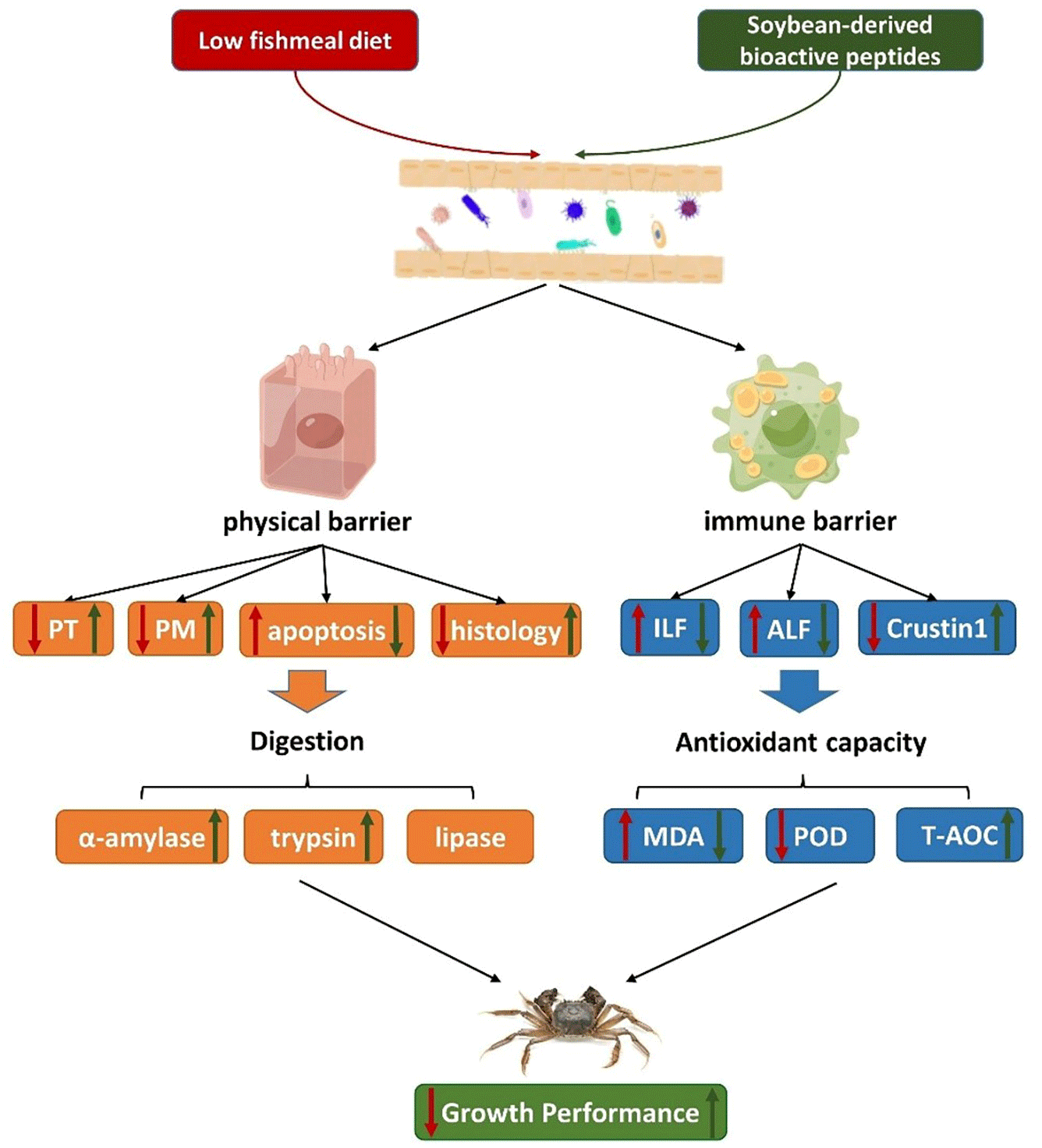No CrossRef data available.
Article contents
Promotion of improved intestinal barrier health by soybean-derived bioactive peptides in Chinese mitten crab (Eriocheir sinensis) fed a low fishmeal diet
Published online by Cambridge University Press: 27 October 2023
Abstract

To alleviate the growth inhibition, and intestinal damage of Chinese mitten crab (Eriocheir sinensis) induced by low fishmeal diets (LF), an 8-week feeding trial was conducted to evaluate the addition of dietary soybean-derived bioactive peptides (SBP) in LF diets on the regulation of growth, digestion and intestinal health. The crabs were fed isonitrogenous and isoenergetic conventional diet and LF diets (10 % fishmeal replaced by soybean meal, LF) supplemented with 0, 1 %, 2 %, 4 % and 6 % SBP, respectively. The results showed that LF diet inhibited growth while inclusion of SBP quadratically remitted the growth inhibition induced by LF. For digestive function, increasing addition level of SBP quadratically improved the α-amylase and trypsin activities. For antioxidant function, LF group significantly increased the malondialdehyde content, while SBP linearly decreased the malondialdehyde level and cubically increased the anti-superoxide anion activity and total antioxidant capacity level. For intestinal health, the peritrophic membrane (PM) almost completely separated from the inner wall of the intestinal lumen, the epithelial cells reduced, the muscularis became thinner and the apoptotic signals increased in LF group; with SBP addition, the intestinal morphology was improved, with the PM adhering to the inner wall of the intestinal lumen, an increase in the number of epithelial cells and an increase in the thickness of the muscularis. Additionally, there was a decrease in apoptotic signals. Dietary SBP also increased the expression of PT and Crustin1 quadratically and decreased the expression of ALF1 linearly, ALF3 and ILF2 quadratically.
Keywords
- Type
- Research Article
- Information
- Copyright
- © The Author(s), 2023. Published by Cambridge University Press on behalf of The Nutrition Society





